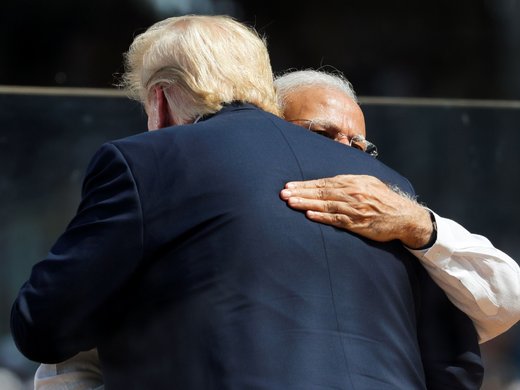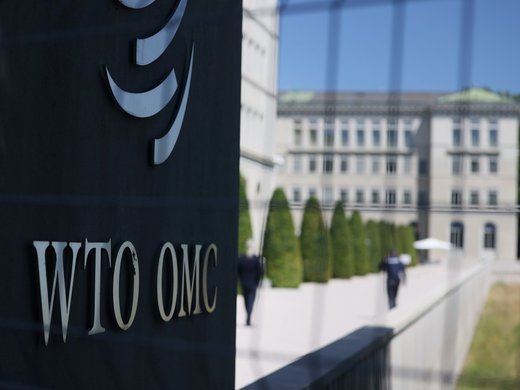They gathered because they want to be permanent members of the United Nations Security Council. But the show of unity in New York by the leaders of Brazil, Germany, India and Japan in September stood out because it was a rare image of what geopolitical affairs should look like. The meeting of the “Group of Four” (G4) had an equal number of men and women, just as one would expect in a world where the proportion of males and females is roughly equal.
The “family photo” will look much different at the Antalya G20 Summit in November. Brazil’s Dilma Rousseff, Germany’s Angela Merkel, India’s Narendra Modi and Japan’s Shinzo Abe will all be there. However, the gender balance of the G4 will be gone. Only four of 19 heads of state in the G20 are women, and that number goes down to three once Argentinian President Cristina de Kirchner’s successor is sworn in. The lack of women decision makers makes it difficult to win change. The World Bank said in a report published in September 2015 that 155 of 173 economies surveyed had at least one law that impedes women from working outside the home (World Bank Group 2015). The McKinsey Global Institute created a “Gender Parity Score” to study the economic and social divide between women and men (McKinsey & Company 2015). A perfect score is one, implying perfect gender balance. On political representation, the overall result for the more than 90 countries studied was 0.217. That’s a long way from one.
A severe shortage of female politicians explains why so little changes. The gap between the percentage of men and women in the labour forces of G20 economies has changed little for more than a decade; in India, the divide actually has widened in recent years. Canada’s gender gap is in the high single digits. That’s a strong result compared with other countries. Japan and Italy, two other high-income countries, each has a gender gap of more than 20 percentage points. Yet only about 60 percent of Canadian women older than 25 either work or are actively looking for a job. McKinsey estimates that labour-force equality would add more than US$28 trillion to global GDP in 10 years, a 26 percent increase from “business as usual.” Ridiculously ambitious? McKinsey goes on to say that countries could strive to match the best in their regions. That would boost GDP by almost US$12 trillion over the same time period (ibid.).
McKinsey’s work is an important benchmark by which to measure the G20’s real ambition on gender parity. Last year in Australia, the group said it would increase GDP by two percent by 2018. Leaders released the Brisbane Action Plan, a 3,800-word document that outlines the many things governments pledged to do either individually or collectively (G20 Leaders 2014). At the 3,000-word mark they took note that the global economy would be in better shape if more women took part in the creation of wealth. “Promoting greater participation by women in the labour market and improving the quality of their employment will contribute to stronger and more inclusive growth,” the Brisbane commitment stated. Leaders said they would reduce the gap in labour force participation rates by 25 percent by 2025, while “taking into account national circumstances.” Success would add more than 100 million women to the labour force and “significantly increase global growth and reduce poverty and inequality.” The leaders said they “recognized the significance of this commitment” and called on international organizations such as the International Labour Organization and the Organisation for Economic Co-operation and Development to hold them accountable.
The organizations should do more than that. They should push the G20 to exceed its modest pledge on gender. The World Bank has done an excellent job of driving behavioural change with its Ease of Doing Business index. India’s Prime Minister Modi is obsessed with cracking the top 50 in the ranking. He even had the World Bank help him conduct a similar ranking of India’s states. Organizations should use peer pressure to narrow the gaps in gender equality. The World Bank’s Women, Business and the Law reports are a good start, but they should be published annually, rather than every two years. The analysis also could be more pointed. The 2016 study catalogues very well the state of affairs. But why not at the same time point out how, say, Brazil’s decision to offer 120 days of paid maternity leave compared with only five days of paid paternity leave encourages gender imbalances?
One wonders if the fact that the G20 effectively is a “boys club” is part of the problem. McKinsey has concluded that gender balance in the workforce is contingent on gender balance in society. The G20 must try harder to inspire that social change. It can do better than one paragraph at the end of a long policy statement. The need for stronger economic growth should be all the incentive it needs.
Works Cited
G20 Leaders. 2014. “Brisbane Action Plan.” November. https://g20.org/wp-content/uploads/2014/12/brisbane_action_plan.pdf.
McKinsey & Company. 2015. “The Power of Parity: How Advancing Women’s Equality Can Add $12 Trillion to Global Growth.” www.mckinsey.com/insights/growth/how_advancing_womens_equality_can_add_12_trillion_to_global_growth.
World Bank Group. 2015. “Women, Business and the Law 2016: Getting to Equal.” http://wbl.worldbank.org.


